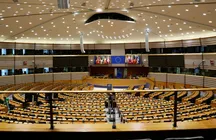The outcome should contribute to:
- Reduce dependencies on non-European suppliers by boosting the EDTIB and promoting the development of a European solution.
- Strategic autonomy of EDTIB in the area of cooperative cyber ranges.
- Fostering the technological cooperation of industries in the field of cooperative cyber ranges.
- Interoperability of EU Member States and EDF Associated Countries Armed Forces:
- In the area of cyber defence for cyber mission planning and execution, including through the use of classified information and high-fidelity simulations such as digital twins within the training process;
- Between civil and military actors;
- Common requirements and harmonisation of capability development.
Cyber range technologies have seen notable uptake over the last decade. They form a cornerstone of cyber defence training and testing. The objective of this topic is to take further the ongoing cyber range technology roadmap by designing and implementing next-generation solutions. The key consideration is on the cooperative approach in developing and using those cyber range technologies, thereby facilitating joint capability development.
Technological investments and developments have so far mostly focused on various fundamental needs such as visualisation, scoring, realistic scenarios, and federation. Separate mature technological building blocks exist in modern cyber and IT solutions. However, these developments have yet to
...




